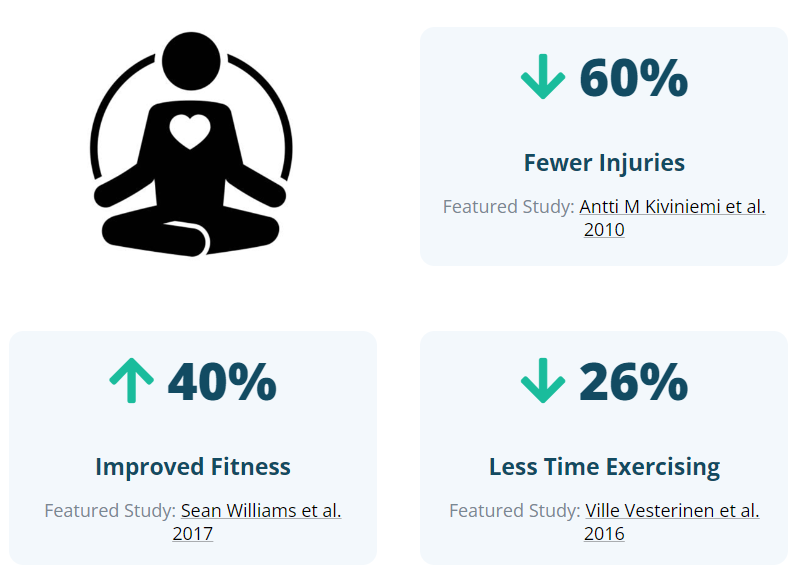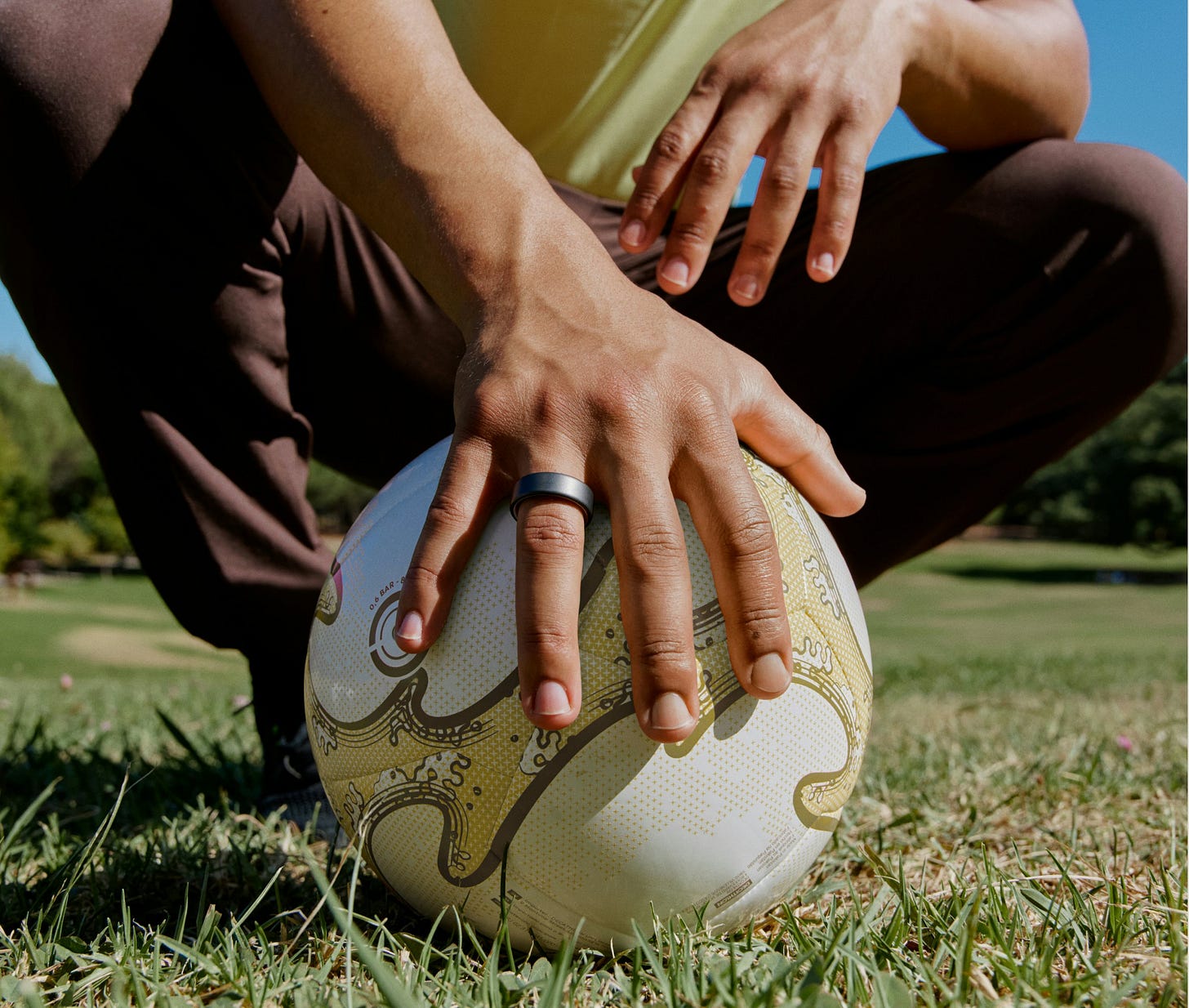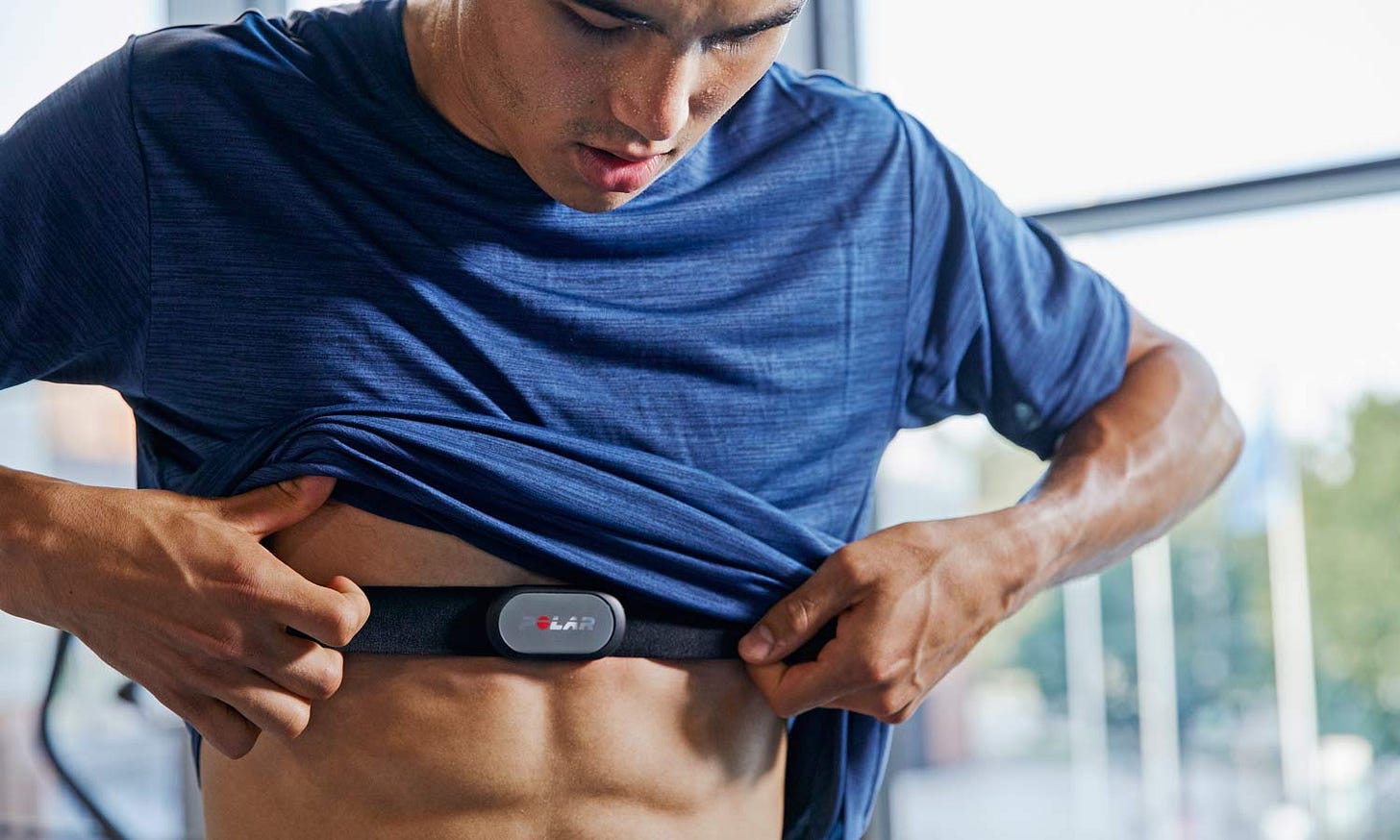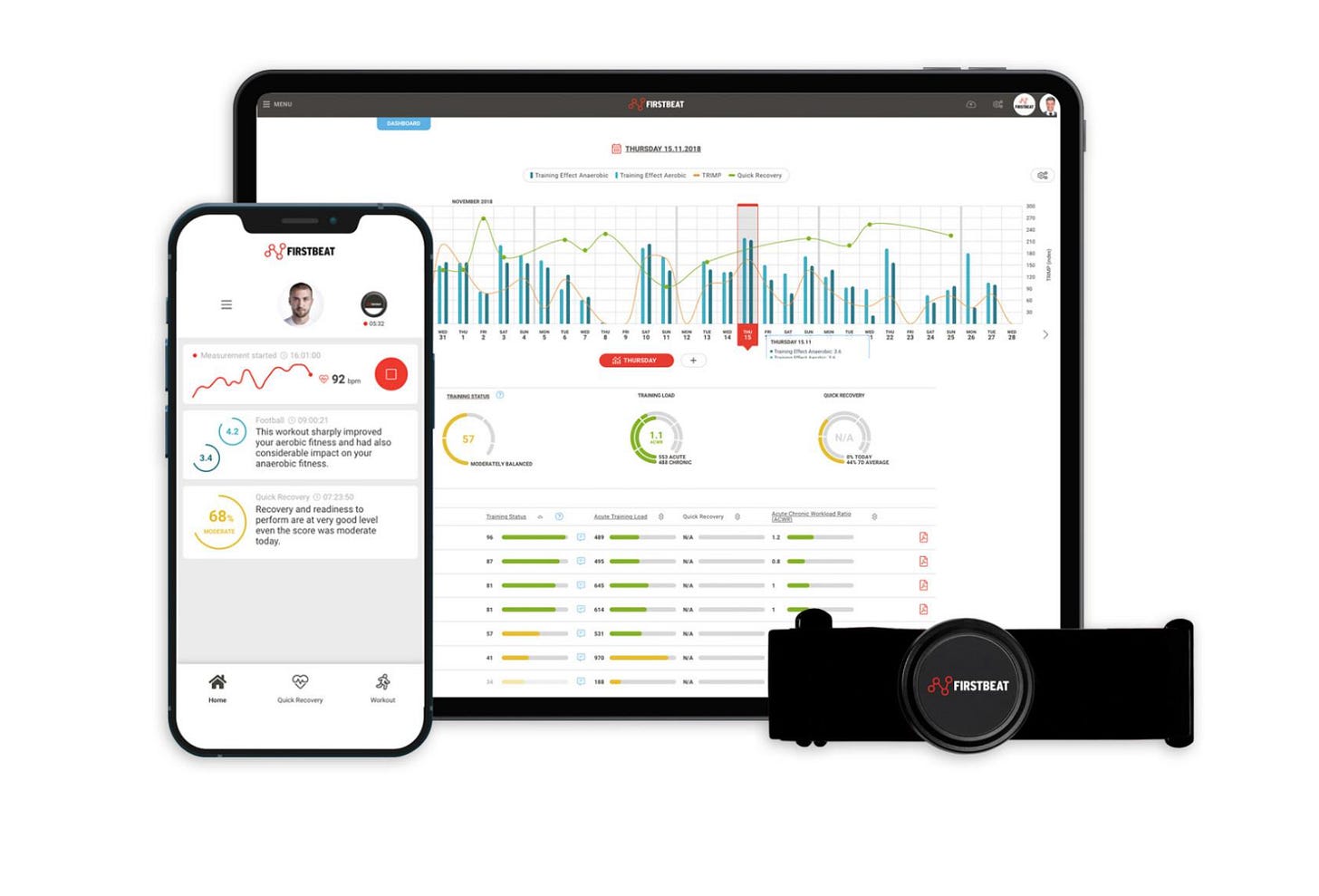💙 Upside Analysis: Heart Rate Variability (HRV) Vendor Ecosystem Market Analysis: Key Trends, Drivers, Challenges, Studies, Case Studies, Vendors, Recommendations to Teams
Heart Rate Variability (HRV) measures the variation in time between heartbeats, reflecting the autonomic nervous system's balance between sympathetic and parasympathetic activity. As a non-invasive biomarker, HRV offers insights into stress, recovery, and overall cardiovascular health. Advancements in wearable technology have propelled HRV monitoring into mainstream health and fitness applications, making it a focal point for both consumers and healthcare professionals.
Market Size
The global HRV monitoring market is experiencing significant growth, driven by the increasing adoption of wearable devices and the rising awareness of preventive healthcare. While precise market size figures vary, the integration of HRV features into consumer wearables and medical devices indicates a robust upward trend, with projections suggesting continued expansion in the coming years.
What are HRV monitoring systems?
Generally speaking, Heart rate variability (HRV) is the physiological phenomenon of variation in the time interval between heartbeats. It is measured by the variation in the beat-to-beat interval.
Other terms used include: "cycle length variability", "R–R variability" (where R is a point corresponding to the peak of the QRS complex of the ECG wave; and RR is the interval between successive Rs), and "heart period variability". Teams typically use HRV monitors to assess players’ sleep quality, stress and fatigue level.
HRV is a holistic measure of total load
HRV is a holistic measure of total load, i.e. it reflects the impact of multiple sources of stress on the athlete, not just training, but sleep, nutrition, mental and emotional stress.
The idea behind using HRV in training is quite simple: monitor your HRV every morning and train as normal. If your HRV drops significantly, take this as an early warning that you may be overloading the system. A small drop is normal as long as you recover because training is, after all, about stress and recovery. A hard session, especially on top of accumulated fatigue, will lower your HRV.
According to some research, HRV also tracks closely with important physiological changes such as sleep quality, phycological wellbeing, longevity, inflammation and pain.
According to EHRV, HRV guided interventions have been shown to improve health, wellbeing and fitness. For example, as shown in the picture below, studies have shown that HRV guided interventions resulted into:
A -26% decrease in anxiety (Source here)
A decrease in blood pressure.
A -14% decrease in LDL Cholesterol (Source here)
An -13% decrease in fatigue (Source here)
A -60% decrease in injuries (Source here)
A +40% increase in overall fitness (Source here)
A -26% decrease in time spend exercising (Source here)
Not surprisingly, as shown below, the number of published research and studies on HRV have also increased over the past years, which is great news.
Source: EHRV, 2022.
HRV devices being used by pro teams as part of players’ rehab process and to train athletes to remain calm in high stress environments.
Over the years, a growing number of pro teams have started to use HRV devices as part of their players’ rehab process. This is what Karam Al-Hamdani, the Director of Sports Medicine and Head Athletic Therapist at CF Montreal FC (MLS), explained during an interview with the Upside back in 2022: “HRV has been around for quite some time, its validity cannot be dispelled. Due to multiple factors that may influence HRV, we as a medical staff have chosen to use it with our injured players so as to best enhance how we individualize their rehab routines. I am in no way a specialist in HRV, I rely mostly on the research out there by companies like Oura, Whoop, Lief etc”.
But HRV devices can also be used to help players remain calm especially in high stress environments. “What I do know is that HRV should not just be limited to professional athletes, it should be marketed to everyone. HRV can be trained, you can transform how you feel, with the various technologies out there we can train our bodies how to remain calm and stay focused when we need it the most, and that would benefit everyone especially athletes in high stress environments”.
Key Studies
Heart Rate Variability and Cardiovascular Risk: Research indicates that decreased HRV is associated with higher cardiovascular disease risk, emphasizing its prognostic value (Source here).
HRV in Chronic Conditions: Studies have shown that HRV monitoring can aid in managing chronic diseases by providing insights into autonomic dysfunctions.
Mental Health Applications: Meta-analyses reveal that HRV is a valuable tool in assessing stress and the effectiveness of mental health interventions. (Source here).
Key Drivers
Consumer Wellness Trends: The shift towards proactive health management has led consumers to seek tools that provide real-time insights into their physiological states.
Athletic Performance Optimization: Athletes utilize HRV data to tailor training regimens, prevent overtraining, and enhance recovery.
Chronic Disease Management: HRV monitoring aids in managing conditions like diabetes and fibromyalgia by detecting autonomic dysfunctions.
Mental Health Monitoring: HRV serves as an objective measure to assess stress and the effectiveness of therapeutic interventions.
Technological Advancements: Improvements in sensor accuracy and data analytics have made HRV monitoring more accessible and reliable.
Key Challenges
Standardization Issues: Variations in measurement protocols and lack of standardized metrics can lead to inconsistent data interpretation.
Data Accuracy: Consumer-grade devices may not match the precision of clinical equipment, potentially affecting the reliability of HRV readings.
User Education: Misunderstandings about HRV metrics can lead to misinterpretation, necessitating better user education.
Privacy Concerns: The collection and storage of sensitive health data raise concerns about user privacy and data security.
Misconceptions About HRV
A common misconception is that a higher HRV is always better. While higher HRV often indicates better cardiovascular fitness and resilience, it's essential to consider individual baselines and context. Factors like age, fitness level, and health status influence HRV, and deviations from personal norms may be more telling than absolute values. Another misunderstanding is equating HRV solely with stress levels; while stress impacts HRV, it's one of many influencing factors.
Key Use Cases
Athletic Training: Monitoring HRV helps in optimizing training loads and recovery periods.
Sleep Quality Assessment: HRV patterns provide insights into sleep stages and overall sleep health.
Chronic Illness Management: Patients with conditions like fibromyalgia use HRV data to manage symptoms and prevent flare-ups.
Mental Health: Therapists use HRV to monitor stress and anxiety levels, adjusting treatments accordingly.
Early Disease Detection: Changes in HRV can signal the onset of illnesses, prompting early interventions. (Source: Study here).
Adoption Rate Across Major Sports Leagues
The adoption of HRV monitoring varies across professional sports leagues:
🏀 NBA: Golden State Warriors: The Golden State Warriors have integrated HRV monitoring into their training regimen. Lachlan Penfold, the team's former Head of Physical Performance and Sports Medicine, utilized Firstbeat’s HRV analytics to assess player readiness and recovery. This approach provided real-time feedback during training sessions, allowing for on-the-fly adjustments to optimize performance (Source here)
🏒 NHL: Multiple Teams: As of the 2023–2024 NHL season, nearly 50% of NHL teams, including the Buffalo Sabres, Florida Panthers, Minnesota Wild, Carolina Hurricanes, Philadelphia Flyers, and San Jose Sharks, have adopted Firstbeat Sports' HRV monitoring to optimize performance and reduce injury risk (Source here).
For example, Jack Anderson, the former Assistant Strength & Conditioning Coach for the San Jose Sharks, stated.
“Firstbeat is an integral piece in the effort to better understand our athletes and give them actionable information to improve their performance on the ice. We utilize Firstbeat daily to manage player load, formulate recovery strategies, and give proper nutritional advice for refueling after practice.”(Source here)
Additionally, the Carolina Hurricanes entered into a three-year agreement with Firstbeat to implement their HRV monitoring technology (Source here).
These implementations highlight the growing reliance on HRV monitoring in professional hockey to enhance player performance and recovery.
Many teams across the Premier League, NFL, MLS, MLB, NCAA, have embraced HRV as part of their player performance and recovery strategy. Novak Djokovic is known to utilize HRV data to fine-tune his training and recovery strategies. He, along with many other elite athletes, leverages HRV monitoring to assess his physiological readiness, identify signs of fatigue or stress, and optimize training loads and recovery periods. This data helps him tailor his training program to maximize his performance and minimize the risk of overtraining or injury
Key Vendors
Source: Companies’ websites, 2025
Whoop
Whoop offers a wrist-worn strap that continuously measures HRV, heart rate, strain, sleep, and recovery metrics, tailored especially for athletes and health-conscious users. Its business model focuses on a monthly or yearly membership subscription rather than selling the hardware itself. Whoop is widely used in professional sports leagues and by high-performance teams globally.
LifeQ
LifeQ builds health biometrics engines that get embedded into wearables by brands like Garmin, Omron, and Fossil, rather than making its own consumer device. Their technology specializes in capturing heart rate, respiration, blood oxygen, blood pressure, and HRV without clinical-grade invasiveness. LifeQ is heavily focused on healthcare, insurance, and wellness sectors through partnerships.
Tiger Tech
Tiger Tech develops FDA-cleared armband sensors that can detect pulse, HRV, arrhythmias, and abnormal respiratory events, with a clinical-grade focus. Their products are primarily targeted at hospitals, first responders, and researchers rather than consumers. Tiger Tech differentiates itself by prioritizing regulatory validation over lifestyle features.
Oura
Oura created the Oura Ring, a compact smart ring that tracks sleep quality, HRV, body temperature, and daily readiness scores with strong nighttime precision. It's extremely popular among biohackers, athletes, and corporate wellness programs. Oura has positioned itself as both a consumer brand and a potential clinical data platform in the future.
Polar
Polar, a pioneer in heart rate tracking, offers highly accurate chest straps (like the H10) and sports watches that capture HRV during exercise and rest. Their products are trusted by endurance athletes and researchers alike. Polar maintains a reputation for reliability in measuring heart rate and HRV, especially during intense activity.
Firstbeat (now part of Garmin)
Firstbeat provides advanced physiological analytics — especially stress, recovery, and VO2 max estimations — now embedded within Garmin wearables. Originally, Firstbeat offered HRV-powered analytics for elite athletes and corporate wellness, before being acquired by Garmin in 2020. Their algorithms remain a critical differentiator inside Garmin's high-end sports watches.
Biostrap
Biostrap produces wrist and ankle wearables designed for precision health monitoring, including sleep, HRV, blood oxygen, and respiration rate. They position their ecosystem for clinical research, elite sports, and health optimization rather than mainstream fitness tracking. Biostrap devices aim for near-medical-grade data accuracy validated in third-party studies.
Movesense
Movesense, spun out of Suunto/Polar, offers modular open sensors that can be worn on the chest, wrist, or embedded in other devices, capturing HRV, heart rate, and motion metrics. Their platform is popular with sports scientists, medical researchers, and R&D teams needing customizable data collection. Movesense devices are flexible enough for both sports performance and clinical research.
HRV4Training
HRV4Training is a popular mobile application designed to measure Heart Rate Variability (HRV) using just a smartphone camera or compatible sensors, without the need for expensive wearables. Created by Dr. Marco Altini, the app helps athletes, coaches, and wellness practitioners track physiological stress and recovery trends over time. HRV4Training leverages validated algorithms and individualized baselines to provide daily insights into readiness, training load adaptation, and lifestyle impacts (e.g., sleep, travel, alcohol, or illness). What sets it apart is its focus on evidence-based interpretation, scientific transparency, and its ability to integrate contextual tags — offering users a more personalized understanding of how internal and external factors affect performance and well-being. It's widely used across endurance sports, elite athletics, and by performance professionals seeking non-invasive, practical recovery data.
Case Studies: HRV Implementation in Team Settings
HRV monitoring has been effectively utilized by various teams to enhance performance, recovery, and overall well-being. Below are notable case studies illustrating the application and impact of HRV in team environments:
1. Robertson Training Systems: Enhancing Athletic Performance
In two case studies, Robertson Training Systems demonstrated the use of HRV monitoring to tailor training and recovery strategies for athletes (Source here).
Case Study 1: A Division-1 female soccer player recovering from an ankle injury underwent a 10-week HRV-guided training program. Results included a decrease in resting heart rate from 66 to 50 bpm and an increase in HRV from 86 to 103, alongside weight loss and reduced body fat percentage. (Source here).
Case Study 2: An athlete experiencing low HRV due to lifestyle factors (e.g., caffeine intake, poor sleep) implemented changes such as reducing caffeine, establishing a bedtime routine, and incorporating relaxation techniques. These adjustments led to significant improvements in HRV scores over 4-6 weeks (Source here).
These cases underscore HRV's role in customizing training and recovery protocols.
2. HRV4Training: Monitoring Team Sports Performance
HRV4Training has explored HRV monitoring in team sports, emphasizing its utility in assessing individual responses to training and lifestyle stressors. According to HRV4Training, key insights include:
Individual Monitoring: Daily HRV assessments can detect changes in cardiac autonomic responses during training camps, aiding in personalized training adjustments. (Source here).
Training Adaptations: HRV metrics help identify signs of positive or negative adaptation to training loads, informing decisions on training intensity and recovery needs (Source here).
These findings highlight HRV's value in optimizing team performance through individualized monitoring.
3. St. Paul's School: Improving Student Sleep and Behavior
In collaboration with WHOOP, St. Paul's School implemented HRV monitoring to enhance students' sleep and behavioral patterns. According to WHOOP, by providing students with 24/7 access to their biometric data, the initiative aimed to:
Increase Awareness: Educate students on the impact of sleep and recovery on overall well-being.
Promote Behavioral Changes: Encourage healthier sleep habits and stress management techniques.
The program demonstrated HRV monitoring's potential in fostering positive behavioral changes in educational settings.
4. Elite Team Sports: Systematic Review of HRV Applications
A systematic review investigated HRV's application in elite team sports, focusing on monitoring training adaptations and athlete health. According to a study led by HRV4Training, The review concluded that HRV is a valuable tool for:
Assessing Training Load: Evaluating the balance between training stress and recovery.
Monitoring Athlete Status: Detecting signs of overtraining or insufficient recovery.
Recommendations for Teams
Define Objectives: Clearly outline what you aim to achieve with HRV monitoring, whether it's enhancing athletic performance, managing stress, or monitoring health conditions.
Choose Appropriate Tools: Select devices that align with your objectives and offer reliable HRV measurements.
Educate Users: Provide training to ensure users understand HRV metrics and how to interpret them correctly.
Integrate with Other Data: Combine HRV data with other health metrics for a comprehensive view of well-being.
Ensure Data Privacy: Implement robust data protection measures to safeguard user information.
Conclusion
The HRV vendor ecosystem is rapidly evolving, offering diverse tools for health monitoring, athletic training, and disease management. While challenges like standardization and data accuracy persist, the integration of HRV monitoring into daily life holds promise for enhancing well-being and performance. As technology advances, and understanding deepens, HRV is poised to become an integral component of personalized health strategies.
You may also like:
⭐ ⌚ Upside: HRV Ecosystems Analysis: Latest Research, Trends, Key Vendors & Where We are Heading
HRV is a key metrics used by many pro teams these days. In fact, HRV guided interventions have been shown to improve health, wellbeing and fitness, but it has also helped reduce athletes’ fatigue, and even blood pressure. Pro teams are now using HRV devices in various shapes and forms (Smart rings by Oura, smart bands by Whoop, smart patch by Lief, et…















